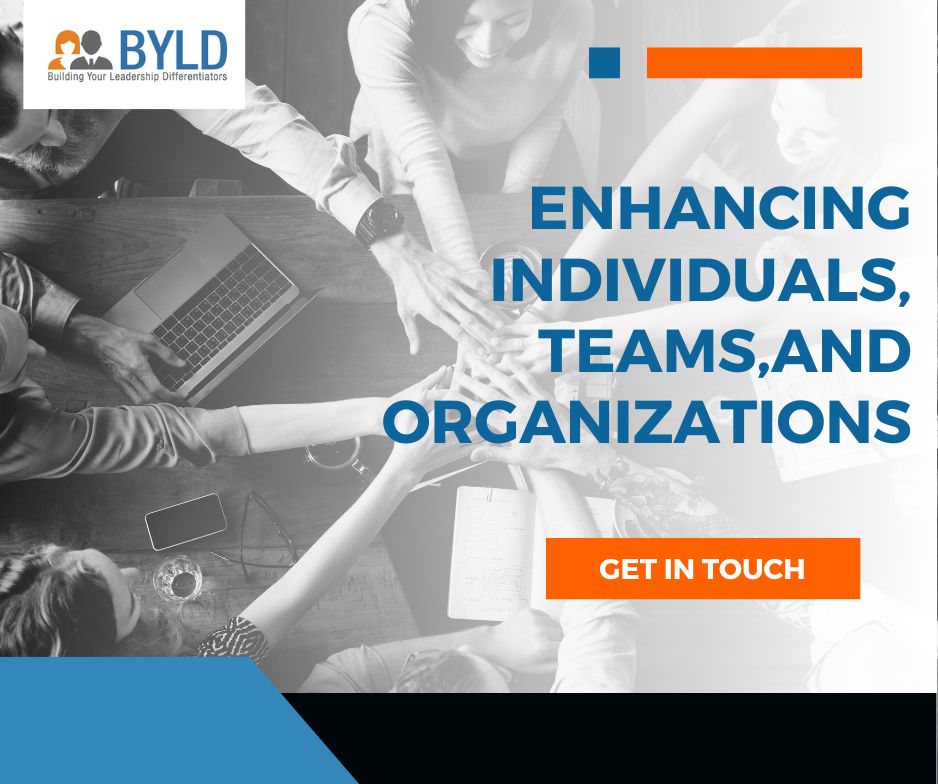
Experiential Learning vs Classroom Training: What’s Best for Your Organization
- August 4, 2025

What Is Classroom/Traditional Training?
Traditional corporate training includes organised programs that use a lot of talks, PowerPoint slides, manuals, and classrooms with a teacher. This way of learning is called “top-down,” and it means that information goes from the teacher to the student without much contact. These meetings usually happen at set times and cover theoretical topics like business rules, skill development, or compliance.
Ways that traditional training is done
- Instructor-led training (ILT): Meetings in person, like in boardrooms or classes. eLearning Modules are online lessons that are either pre-recorded or live.
- Seminars and Webinars are timed events where experts teach people who are just sitting there.
- Printed manuals and handbooks are text-based learning tools that let you learn at your own pace.
Advantages of traditional corporate training
When there is consistency, everyone gets the same knowledge in the same way.
Control: Trainers can decide how fast, what, and where the lessons go.
Documentation: It’s easier to keep track of test scores, attendance, and finishing to make sure rules are followed.
Some problems
- Learners are often quiet, which makes it hard for them to remember what they’ve learnt.
- Not Enough Real-World Experience: There is often a gap between theory and practice in the real world.
- All-One-Size: Doesn’t take into account different ways of learning or how fast each person learns.
- How to Scale Problems: For bigger organisations, setting up in-person or live sessions can be hard and expensive.
In today’s fast-paced workplace, traditional corporate training is starting to feel out of date. That’s why many businesses are exploring more interactive, experiential learning methods as they weigh the choice between experiential learning vs traditional training.
What Is Experiential Learning?
People learn by doing, thinking about, and then using what they’ve learnt. This is called experiential learning. Students don’t just sit and listen to classes or read textbooks; they also take part in simulations, real-life situations, or team-based tasks to learn and use what they’ve learnt.
David Kolb’s Experiential Learning Cycle, which has four main steps, fits with this method:
Concrete Experience: Students are given a job or challenge from the real world.
Reflective observation: They think about what took place and how it made them feel.
Abstract conceptualisation: Based on their thoughts, they come up with ideas or conclusions.
Active Experimentation: They use what they know in brand-new scenarios.
This loop makes sure that people keep learning and getting better. Experiential learning is powerful because it can turn information that you are passively receiving into knowledge that you are actively using. It makes times that are emotionally charged, which helps people remember and use skills better.
Benefits of experiential learning:
- More interest: students stay more focused and interested when they are actively taking part in the learning.
- More Durable: Real events are much more durable than lessons or manuals.
Learners practise both hard and soft skills in a safe, virtual place, which helps them get better faster. - Instant Feedback: When you make a mistake, you learn from it, not fail.
Companies are putting more emphasis on being quick, creative, and flexible, which makes the benefits of experiential learning even more important than before. When companies compare experiential learning vs traditional training, hands-on methods stand out because they help people understand things better and improve their performance more quickly—making them a strong alternative to traditional corporate training.
Read more – Benefits & Advantages of Experiential Learning for an Organization
Head-to-Head Comparison
It’s clear that both experiential learning and traditional corporate training are meant to give people information and skills, but they do so in very different ways. To see how they differ, let’s break down some important terms:
- Engagement & Retention : Most of the time, talks, slides, and reading materials are used in traditional corporate training. It’s good at getting information to people quickly, but it’s not very good at keeping people interested. It’s possible for learners to not remember much when they are inactive.
On the other hand, experiential learning involves active tasks such as role-playing, games, and group challenges. Having these mentally and emotionally stimulating situations helps you pay attention and remember things. One of the biggest benefits of experiential learning is long-term retention by linking ideas to real-life actions and results. - Skill Transfer :In traditional corporate training, ideas are usually taught separately. Because of this, students may find it hard to use what they’ve learnt in real life. The information stays theoretical.
Experiential learning, however, is rooted in real-life situations. Learners use skills immediately as they are learning them, which gives them instant input and context. This significantly boosts their ability to transfer those skills into high-pressure or collaborative work environments. - Resource Needs :While it may require fewer resources, traditional corporate training is easier to scale since it mainly needs a teacher, venue, and materials. But it can feel too broad and not specific to job functions.
Experiential learning may need more resources upfront—like trainers, props, platforms, or scenario planning—but the benefits of experiential learning come through long-term performance improvements. It’s a solid choice for building strategic and people-centric skills. - Scalability
In terms of scalability, traditional corporate training wins—the same material can be reused globally with minimal changes. It’s useful for onboarding, compliance, and basic skill-building.
But thanks to digital platforms, simulations, and gamification tools, experiential learning is now also scaling fast. Companies can craft immersive, locally relevant training that can still be delivered to global teams. That makes the benefits of experiential learning even more powerful in today’s digital-first training landscape.
When to Use Which: Mapping Training Goals to Models
Whether you use traditional corporate training or experiential learning rests on your program’s goal, the people you want to reach, and the results you want to see.
Traditional corporate training is still a good way to teach basic skills, rules for following the rules, product specifications, and expert procedures. In a short amount of time, this way works well for teaching standardized knowledge to a large group of people. It works best when teaching people about rules, safety procedures, or policies, where accuracy is more important than imagination or making decisions.
However, experiential learning is better when you want to improve skills that you will need in the real world, such as speaking, leadership, emotional intelligence, decision-making, or dealing with customers. It puts students in real-life situations where they can practice, fail, and improve how they act. One of the major benefits of experiential learning is that it helps bring behavioral change, not just surface-level information.
How people remember and use what they’ve learned is another important aspect in the experiential learning vs traditional training debate. A textbook won’t help you teach your sales team how to deal with complaints or get managers ready for tough talks. To really understand those skills, they need role-plays, simulations, or gamified scenarios. On the other hand, traditional corporate training is a good way to make sure that new workers understand company rules when they are first hired.
Most of the time, the best methods combine both models. For example, a program might start with traditional corporate training to build foundational knowledge and then move to experiential learning to reinforce and apply that knowledge. Companies can improve performance, retention, and interest by aligning learning outcomes with the right approach—experiential learning vs traditional training should be chosen based on your training goals.
Traditional corporate training, on the other hand, is a good way to make sure that new workers understand company rules when they are first hired.
Most of the time, the best ways to learn involve both. For example, a program might start with standard business training to build basic knowledge and then move on to hands-on learning to strengthen and use that knowledge. Companies can improve performance, retention, and interest by matching training goals to the right methods.
Implementation Tips: Reflection Strategies, Blended Model
When it comes to business settings, using experiential learning vs traditional training effectively requires more than just picking a method. It also requires careful execution. These execution tips will help you make sure that your approach has a real effect, whether you’re updating an old traditional corporate training program or starting a brand-new project.
- Add loops for reflection
Reflection is a key skill and one of the benefits of experiential learning. After each task, ask students to stop, think, and share what they’ve learnt. This fits with Kolb’s experiential learning cycle and helps people understand better. Debriefings, writing in a notebook, or peer talks are all ways to reflect. - Make a plan for blended learning
By combining traditional corporate training with experiential learning, a fair and scalable model is made. For example, start with digital courses that teach basic information (like business policies or compliance standards), and then move on to simulations or role-plays that make those ideas come to life. This mixed model helps students make connections between theory and use in the real world. - Make sure it fits with the learning goals
Any kind of learning, whether it’s experiential learning or traditional corporate training, should always be linked to clear business goals. When the goal is to change behaviour or learn soft skills, experiential learning is often more effective. If the goal is to learn something or follow the rules, traditional corporate training might work. - Do a test run before scaling
Work with a smaller group to test your program before putting it in place for the whole company. Learn how to measure staff feedback, behaviour change, and information retention. This not only confirms your experiential learning vs traditional training mix, but it also helps you improve how you teach before you use it with more people. - Using these best practices helps the change from traditional corporate training to a more hands-on, active method of experiential learning go more smoothly, strategically, and effectively.
Experiential Learning at BYLD
We don’t just talk about experiential learning at BYLD; we do it. As leaders in developing leaders and driving mindset change, we apply experiential learning vs traditional training principles across all our programs. Whether it’s a simulation-led leadership workshop, a high-impact team-building experience, or a blended learning journey with digital tools and live coaching, our approach is rooted in real-world application.
We recognize the benefits of experiential learning—it drives engagement, deepens understanding, and leads to lasting behavioural transformation. That’s why our learning solutions go beyond simply delivering content. Instead of relying solely on traditional corporate training, we design experiences that shift perspectives and inspire real action. By blending immersive learning with structured knowledge delivery, we empower businesses to achieve tangible outcomes—greater productivity, stronger collaboration, and enhanced leadership pipelines.
Companies across diverse industries trust BYLD to replace passive learning models with active ones using our expertise and data-driven strategies. Are you ready to transform the way your teams learn?
Read more – Ultimate Guide to Experiential Learning and Team Building Activities
Conclusion: Rethink How Your People Learn
The argument over experiential learning vs traditional training is no longer just academic; it’s now a matter of strategy. While traditional corporate training remains useful for building foundational skills, the real benefits of experiential learning lie in its ability to spark meaningful transformation. It turns passive listeners into active participants and converts theory into impactful action.
At BYLD, we support organizations in moving beyond outdated approaches by embedding experiential learning into the core of leadership development, team alignment, and performance enhancement. Now is the time to turn the ordinary into extraordinary—and learning into real transformation.
Let’s take the next big step forward for your company.
Get in touch with BYLD today to see how experiential learning can reshape your people, performance, and future.





